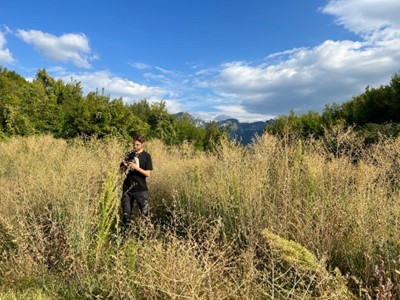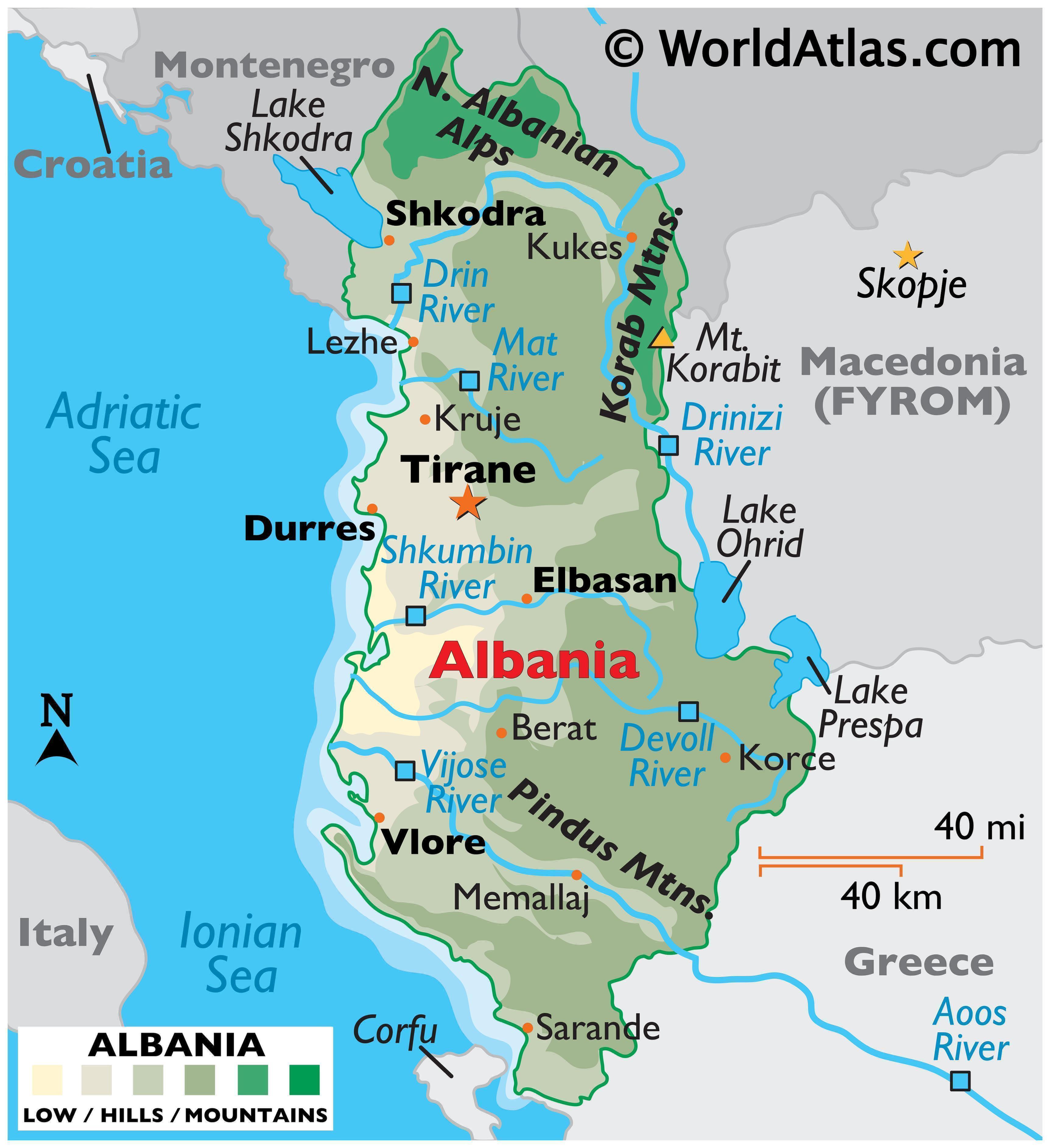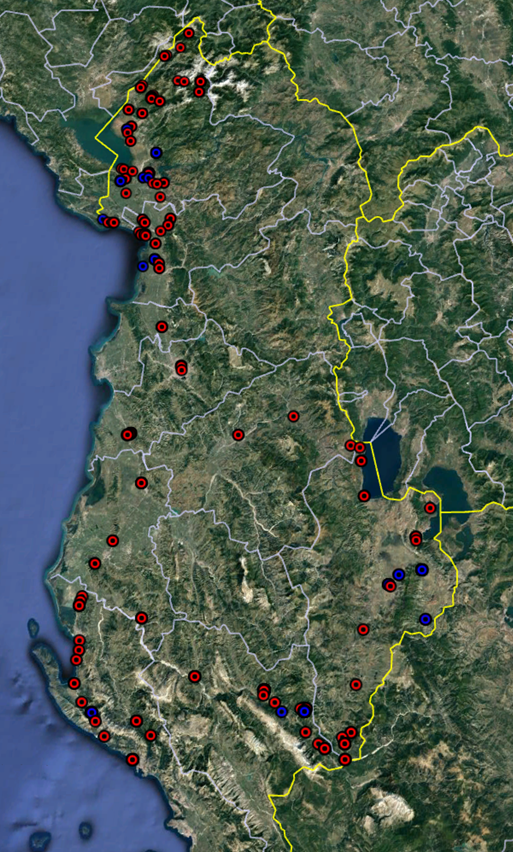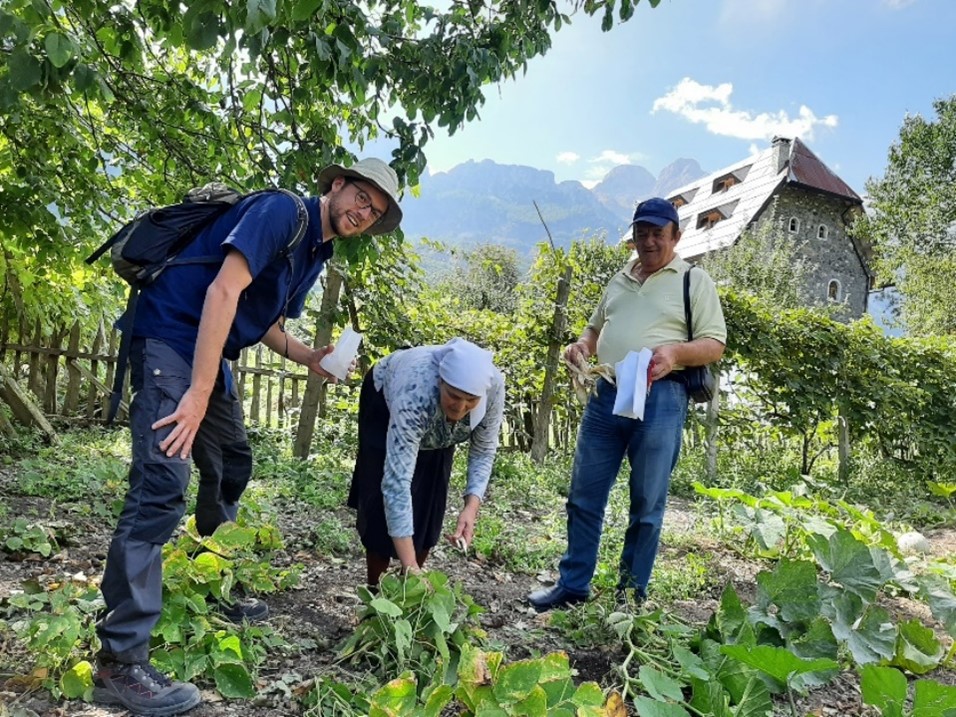



 The collecting team included 4 members, including driver. During the 2022 mission, the team was extended for several days with an expert on Albanian crop wild relatives. Collecting efforts targeted markets, local farmers, and wild habitats. During the expedition an area of approximately 300 x 130 km was covered and over 4000 km was traversed (Figure 1A). More schematically, the expedition covered the North Albanian Alps and the coastal lowlands around Shkodra, the Adriatic and Ionian seacoast of Southwest Albania, and the southeastern part of Albania between Lake Ohrid and the Pindus mountains (Figure 1B).
The collecting team included 4 members, including driver. During the 2022 mission, the team was extended for several days with an expert on Albanian crop wild relatives. Collecting efforts targeted markets, local farmers, and wild habitats. During the expedition an area of approximately 300 x 130 km was covered and over 4000 km was traversed (Figure 1A). More schematically, the expedition covered the North Albanian Alps and the coastal lowlands around Shkodra, the Adriatic and Ionian seacoast of Southwest Albania, and the southeastern part of Albania between Lake Ohrid and the Pindus mountains (Figure 1B).
Landraces were collected either directly from farmers or through collaboration with local agronomic specialists. These experts had already identified and collected valuable landraces from farmers in the lead-up to the expedition. Crop wild relatives were collected mostly from roadsides in a wide variety of habitats, ranging from coastal lime stone cliffs and beaches in the south, to olive groves and abandoned farm fields in Central Albania, and mountainous areas reaching up to 1200 m in the North. Additionally, opportunistic collection from villages and farms where landraces were sourced took place.
Passport data were collected and the latitude, longitude and altitude were determined with google maps. Pictures were also taken of the plants in their natural environment. The missions collected 307 accessions (99 landraces and 208 wild) of 41 different species (Table 1.). Some of the accessions, especially Allium and Daucus, needed further taxonomical identification.
| Table 1. Acccessions collected in Albania in 2022 and 2023 | ||
|---|---|---|
| Botanical name | # accessions | type of material |
| Asparagales | ||
| Allium ampeloprasum | 8 | wild |
| Allium ampeloprasum var. porrum | 5 | landrace |
| Allium cepa | 6 | landrace |
| Allium sp. | 19 | wild |
| Asparagus acutifolius | 3 | wild |
| Apiaceae | ||
| Anethum graveolens | 1 | landrace |
| Anthriscus cerefolium | 1 | landrace |
| Daucus carota | 27 | wild |
| Daucus carota subsp. | 10 | wild |
| Daucus sp. | 4 | wild |
| Foeniculum vulgare | 4 | wild |
| Pastinaca sativa | 1 | wild |
| Petroselinum crispum | 1 | landrace |
| Amaranthaceae | ||
| Beta vulgaris subps. maritima | 1 | wild |
| Beta vulgaris var. cicla | 3 | landrace |
| Spinacia oleracea | 3 | landrace |
| Asteraceae | ||
| Cichorium intybus | 35 | wild |
| Cichorium pumilum | 1 | wild |
| Lactuca saligna | 30 | wild |
| Lactuca serriola | 53 | wild |
| Lactuca viminea | 4 | wild |
| Mycelis muralis | 1 | wild |
| Brassicaceae | ||
| Brassica cretica | 1 | wild |
| Brassica incana | 1 | wild |
| Brassica oleracea | 6 | landrace |
| Brassica sp. | 2 | wild |
| Diplotaxis muralis | 1 | wild |
| Diplotaxis tenuifolia | 2 | wild |
| Sinapis arvensis | 1 | landrace |
| Cucurbitaceae | ||
| Citrullus lanatus | 3 | landrace |
| Cucumis melo | 12 | landrace |
| Cucumis sativus | 6 | landrace |
| Cucurbita maxima | 1 | landrace |
| Cucurbita moschata | 1 | landrace |
| Cucurbita pepo | 2 | landrace |
| Fabaceae | ||
| Phaseolus coccineus | 2 | landrace |
| Phaseolus vulgaris | 12 | landrace |
| Pisum sativum | 1 | landrace |
| Capsicum annuum | 14 | landrace |
| Solanum lycopersicum | 11 | landrace |
| Solanum melongena | 7 | landrace |
| Total landraces | 99 | |
| Total wild | 208 | |
| Total | 307 |
 Geslaagde verzamelmissie groenten in Albanië
Geslaagde verzamelmissie groenten in Albanië